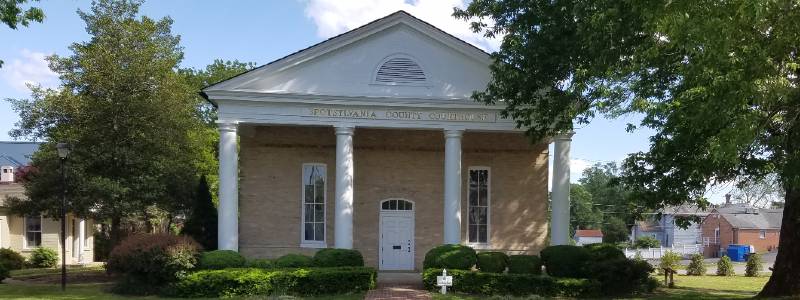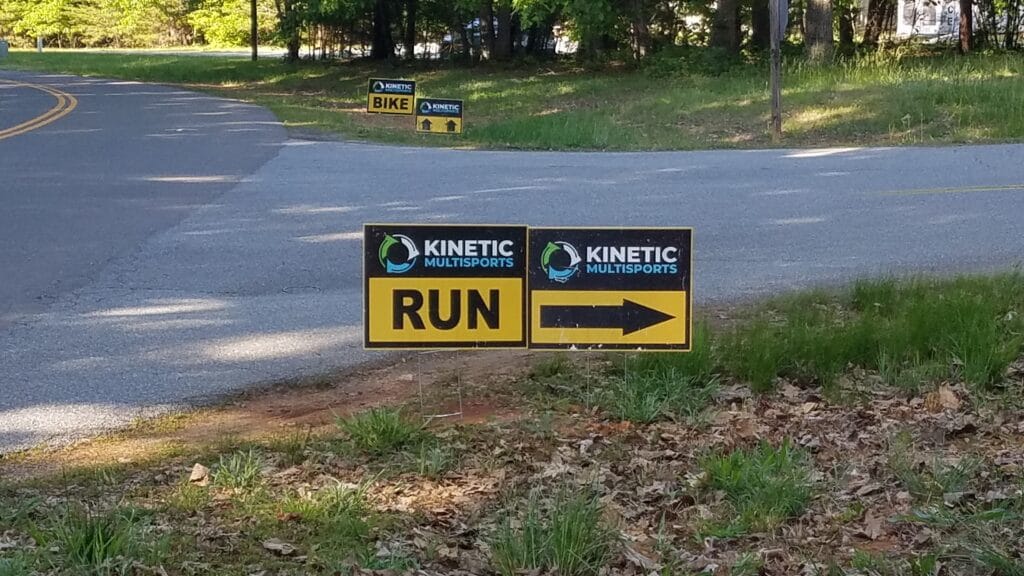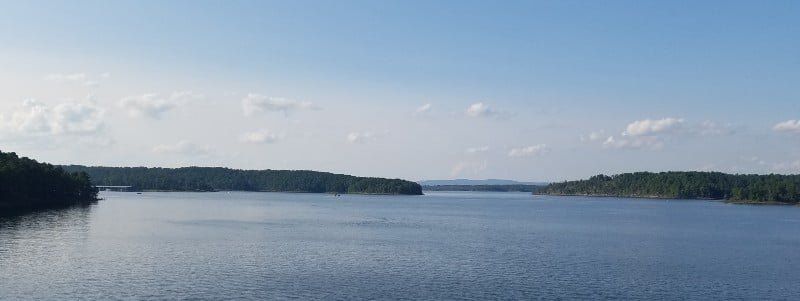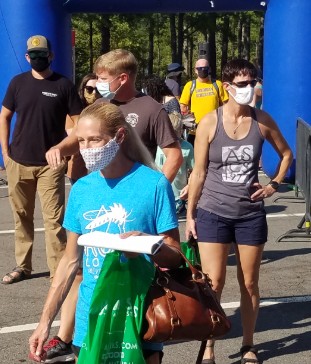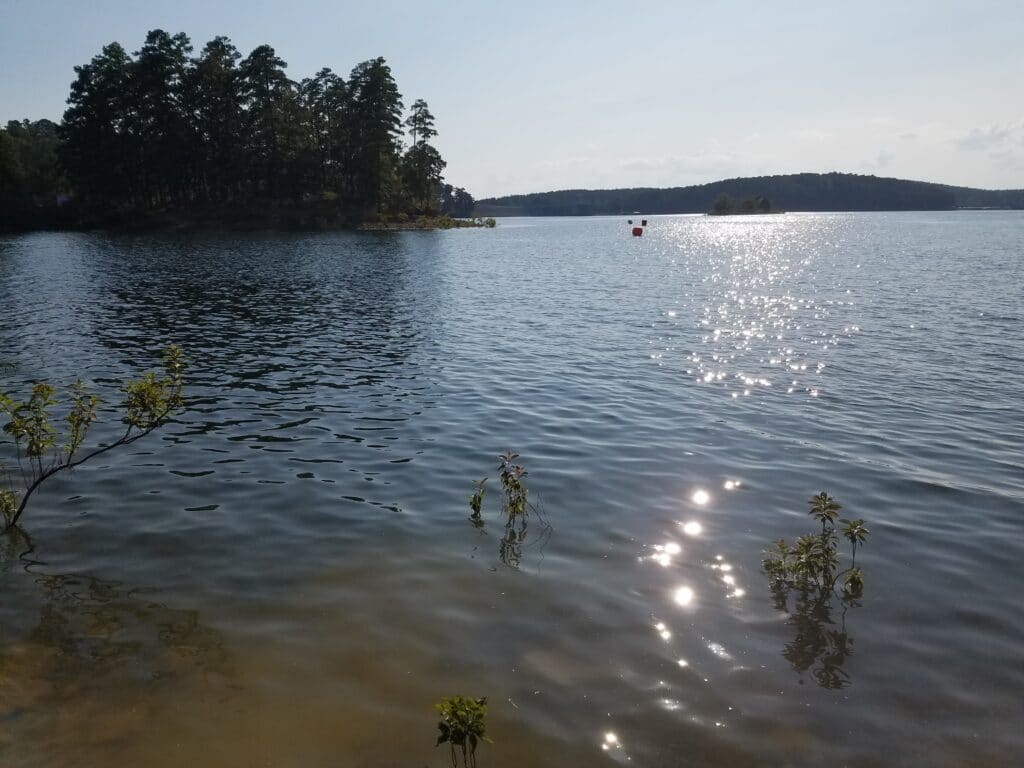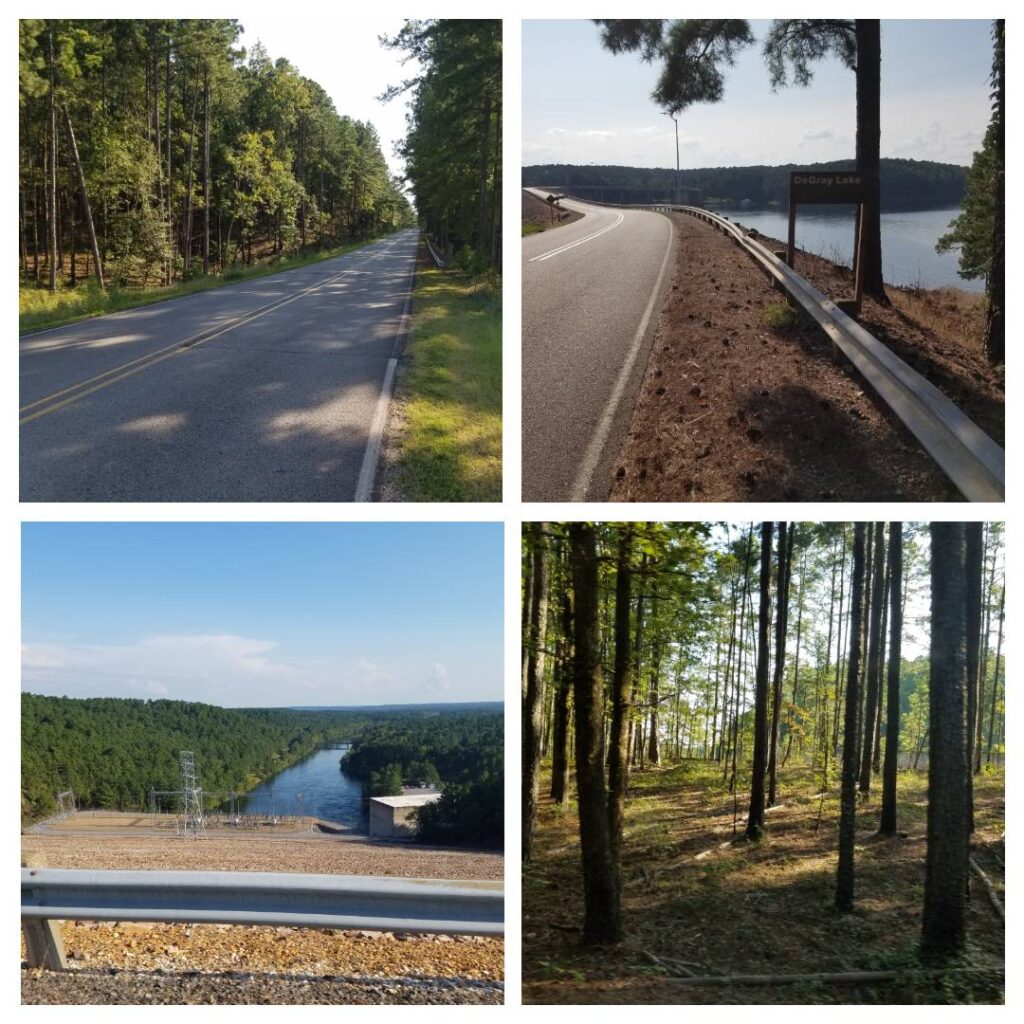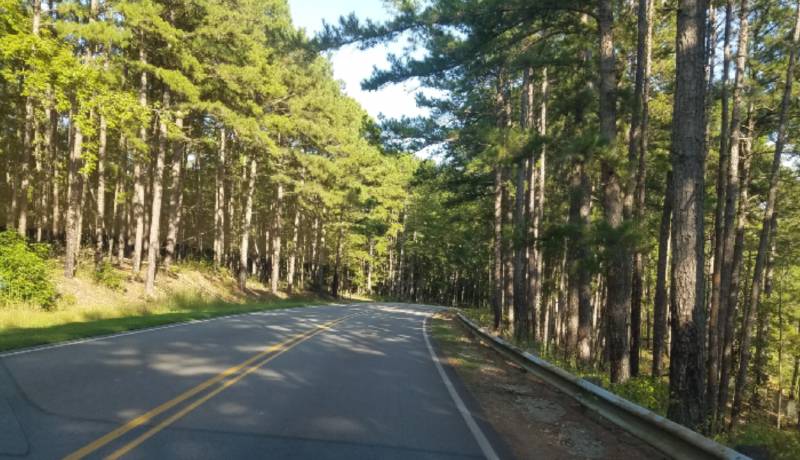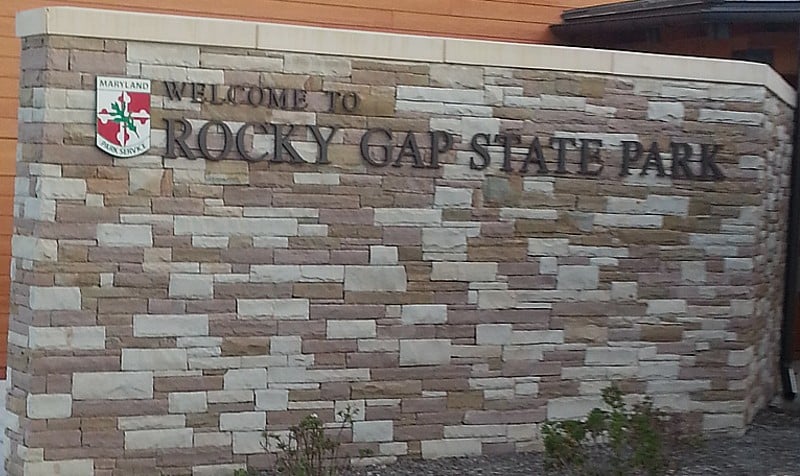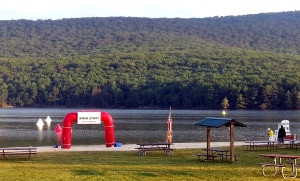Triathlon Across the USA: State #44 – Delaware
Bear, Delaware; May 16, 2021 – Bear Triathlon, Lums Pond State Park.
The Delaware triathlon was part of a six-week road trip that included stops in Omaha, Nebraska; The Villages, Florida; and parts of Virginia and Delaware for triathlons in these two states.
Before the Delaware Triathlon
Joy and I began the week between the Virginia and Delaware triathlons with biking on a portion of the Virginia Capital Trail, starting at Colonial Williamsburg. After a few days in the Williamsburg area, we packed up and drove to the Atlantic Coast of Delaware via the Chesapeake Bay Bridge and the Delmarva Peninsula.
We settled in Bethany Beach, Delaware from where we took the three days leading up to the Bear Triathlon to tour the coastal area between Ocean City, Maryland, and Rehoboth Beach, Delaware.
The sights and experiences during our first visit to the area between southern Virginia and the Delaware coast reminded us how thankful we are to be on this triathlon journey.
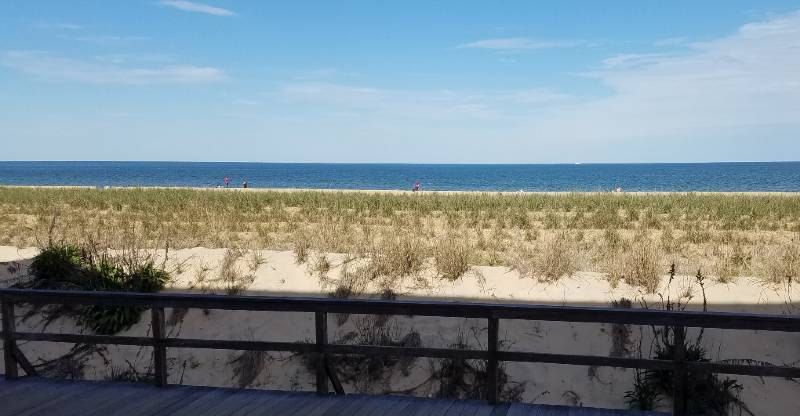
Previewing the Race Course
Late Saturday afternoon, Joy and I drove from Bethany Beach to Lums Pond State Park, outside Bear, Delaware, to pickup the race packet for the Bear Triathlon. It surprised us to see a line of tens of cars stretching out of the park entrance onto the road leading up it. My first thought was that this was going to be a big triathlon, with a lot of participants.
The Bear Triathlon was a decent size, with about 550 competitors in the sprint and Olympic distance races combined. However, we eventually learned that Lums Pond State Park offers tremendous opportunity for outdoor activity beyond triathlon, from kayaking and paddle boating to picnicking. There was even a cricket match being played next to the race transition area.
After collecting my race packet, which included a t-shirt and race numbers for the bike and run, we drove the bike course. We do this as often as possible to check the condition of the roads, looking for potholes or other obstacles that could present a hazard during the race. This is also an opportunity to review the hills and turns along the course.
Near the end of the course, we were saddened to see the remains of a mother deer and her fawn lying on the bike path. By the next morning, these were no longer there.
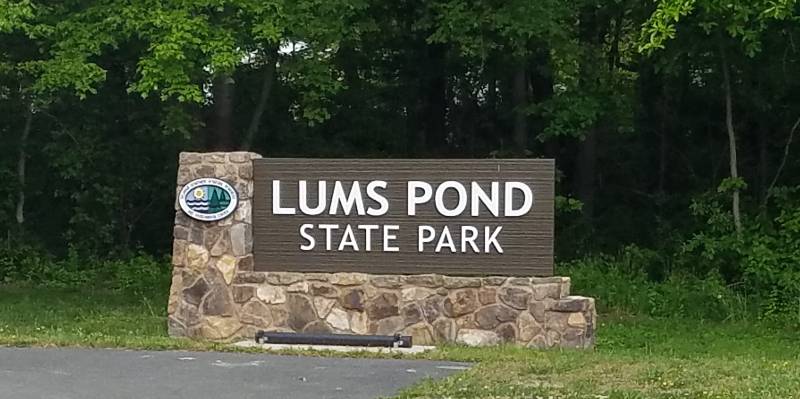
3rd Annual Bear Triathlon
The Bear Triathlon is one of several running and multisport events managed by Rip It Events (Columbia, Maryland). The company also offers coaching services.
This race included both sprint and Olympic distance events. Organizers allowed participants of either distance to compete as an individual or as part of a relay team.
The advertised distances for the individual legs of this USAT-sanctioned sprint triathlon were:
- Swim: 0.6 miles (966 m or 1,056 yards) – Actual: 1,348 yards (0.77 miles or 1,233 m)
- Bike: 10 miles (16 km) – Actual: 9.9 miles (16km)
- Run: 3 miles (4.8 km) – Actual: 3 miles (4.8 km)
Actual distances shown above are from my Garmin Forerunner 920XT.
An Anxious Group
Maybe it was because of the many race cancellations over the past year, but the triathletes competing today seemed eager to race.
Lums Pond State Park opens at 5 am. The transition area was set to open at 5:15 am.
I arrived at the park entrance a few minutes before 5 am, expecting to wait for the gate to open. I imagined there would be a few cars which had arrived before me.
However, to my surprise, the gate was already open. I passed through without stopping.
I was even more surprised when I reached the parking lot closest to the transition area. Cars were already lined up one deep across the width of the parking lot.
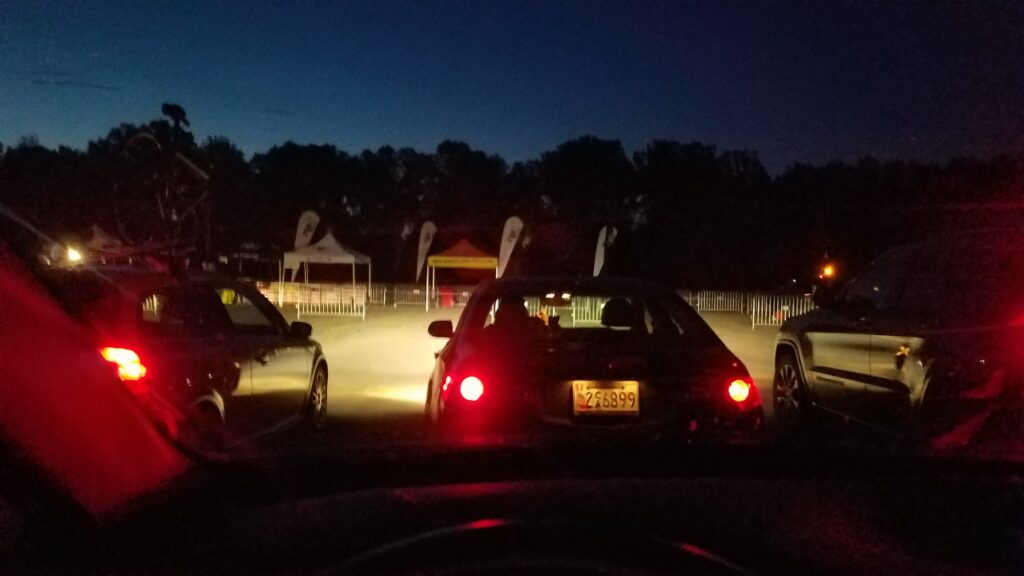
A Cool, Still Morning – Perfect For a Triathlon
The 48 °F air temperature during setup of the transition area made me happy I was wearing a sweatshirt. However, as the sun rose and race time approached, the air temperature climbed a few degrees. Meanwhile, the air remained still, with only a slight breeze. Clouds covered most of the sky.
By the start of the swim, the combination of full sleeve wetsuit and temperature in the low-to-mid 50s °F was comfortable – not too cold, not too warm.
By the time we finished the bike and run legs, the temperature was still comfortably in the mid-60s °F.

Swim
The race director reported the temperature of the water in Lums Pond to be 68°F. Not only was this race wetsuit-legal according to USA Triathlon rules, but he encouraged racers to wear a wetsuit.
Competitors started their swim in one of eight groups based on race distance, age, and gender. The first four groups, or waves, included those in the Olympic triathlon.
The three-quarter mile swim was longer than typical for a sprint triathlon. The course traveled at an angle away from the beach, then turned left toward the opposite side of the pond. After a short distance, we made a second left turn and swam parallel to the beach, finally reaching the last buoy. From here, a swim of a few hundred yards brought us to the sandy beach.
However, the swim leg was not yet complete. To finish this portion, triathletes needed to continue another roughly hundred yards before crossing the timing mat. We were then in T1, the first transition period.

Bike
We mounted our bikes just outside the transition area. The bike leg followed a course that left the park on Bucks Jersey Road. The single loop course exited and later re-entered the park at the main entrance gate.
Once outside the park, we made four right turns following Howell School Road, Red Lion Road, and Route 301. The final of the four turns brought us back on Bucks Jersey Road and the ride to the transition area.
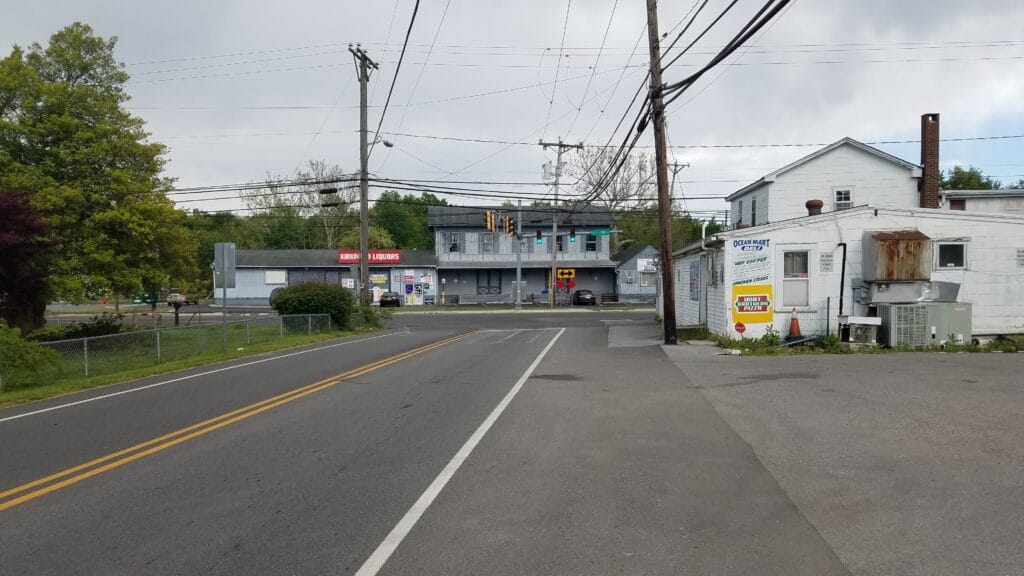
We owe a big thank you to the race crew and volunteers. They did a tremendous job of directing bikers and controlling car and truck traffic with whom we shared the road.
Run
The out-and-back run course took us on a combination of grass, dirt trail, and asphalt covered roads. One feature of the out-and-back course I enjoy is the exchange of encouragement between racers. This was on full display today.
By the time sprint triathlon racers were on the run course, some of those competing in the Olympic distance race were also on their run. The difference was the Olympic triathletes covered all but the last few yards leading to the finish line two times.
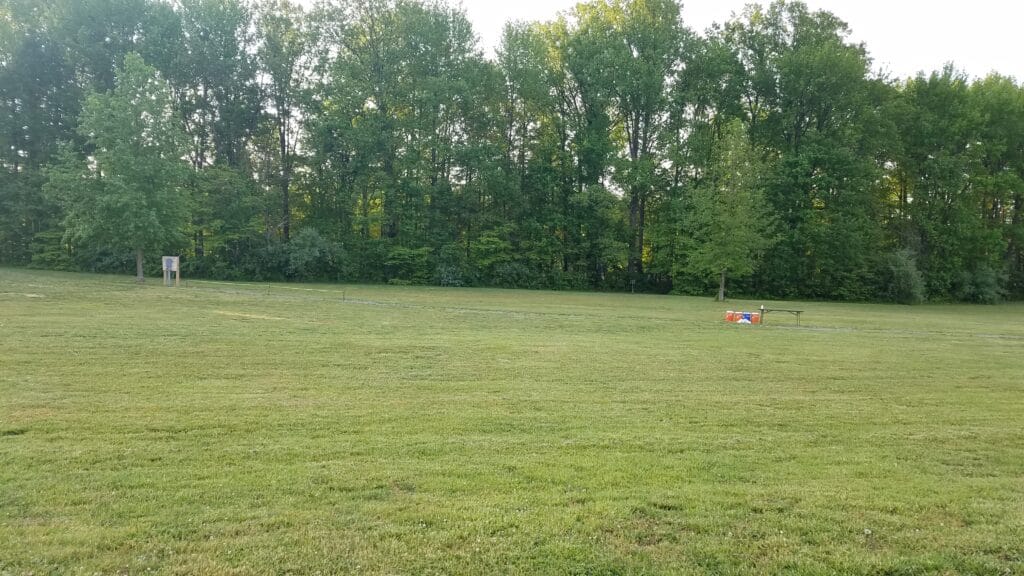
After the Delaware Triathlon
After completing my race and repacking my bike and other gear (wetsuit, goggles, swim cap, bike helmet, and race number belt), I sat outside the transition area on the edge of a picnic table from where I watched others coming and going.
During this time, I met John Dean, a seasoned, senior triathlete who was closing in on his 100th triathlon. He made it. You can read John’s story, 101 Triathlons – John Dean’s Story, on this site.
I waited as long as I could for the awards ceremony. However, I eventually needed to leave to make the hotel check-out time. Thankfully, the race organizer was kind enough to send me the award I received for my second place finish within my age group.
After showering and checking out of the hotel, Joy and I started our journey back to Minnesota. Our route took us through Lancaster County, Pennsylvania, on the way to West Chicago, Illinois for an overnight stay with friends.
Upon reaching our Minnesota home, we began a multi-month project of decluttering, donating, and packing for our move to Florida in September.
Race Firsts
- First triathlon in which the swim took place in a body of water in which swimming is normally not allowed.
Your Favorite Lake For A Triathlon Swim?
Have you done a triathlon in Delaware? Delaware is where John Dean did his first one.
Tell us about these in the Comments below.
Comments: Please note that I review all comments before they are posted. You will be notified by email when your comment is approved. Even if you do not submit a comment, you may subscribe to be notified when a comment is published.


